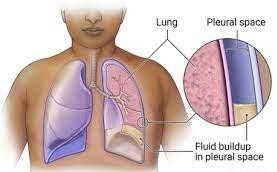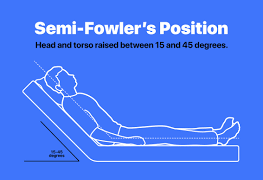A nurse is admitting a patient who has a DTI (deep tissue injury) to the hospital. The nurse understands that a DTI:
may be caused when one layer of tissue slides over another layer of tissue.
requires dressing changes twice daily to promote healing.
is usually caused by overhydration.
is a partial thickness injury caused by pressure
The Correct Answer is A
Choice A rationale: A DTI is a type of pressure injury that occurs when the skin and underlying soft tissue are compressed between a bony prominence and an external surface for a prolonged period of time.
Choice B rationale: Dressing changes for a DTI would depend on the severity and characteristics of the injury, but a specific frequency is not universally prescribed. Choice C rationale: A DTI is not typically caused by overhydration but is associated with pressure-related damage to underlying tissues.
Choice D rationale: DTI is not a partial thickness injury, but rather an injury to the deep layers of tissue that may not be visible on the surface. A partial thickness injury involves damage to the epidermis and/or dermis, such as a stage 2 pressure ulcer.
Nursing Test Bank
Naxlex Comprehensive Predictor Exams
Related Questions
Correct Answer is B
Explanation
Choice A rationale: Poor tissue perfusion from circulatory insufficiency can affect oxygenation, but fluid in the lungs primarily impacts gas exchange at the alveolar level.
Choice B rationale: Decreased diffusion of oxygen from the alveoli to the blood is a major factor affecting oxygenation when fluid is present in the lungs.
Choice C rationale: Lowered oxygen carrying capacity can affect oxygenation but is not the primary concern in the presence of fluid in the lungs.
Choice D rationale: Decreased concentration of oxygen in the air is not the primary factor affecting oxygenation in a client with fluid in the lungs.
 |
Correct Answer is D
Explanation
Choice A rationale: The Trendelenberg position is not typically used for dyspnea; it involves placing the body in a supine position with the lower half tilted downward. Choice B rationale: The side-lying position is not typically used for dyspnea.
Choice C rationale: The supine position may worsen dyspnea, especially in individuals with respiratory distress.
Choice D rationale: The semi-Fowler's position, with the head of the bed elevated, is often used to assist with breathing and improve oxygenation in clients with dyspnea.

Whether you are a student looking to ace your exams or a practicing nurse seeking to enhance your expertise , our nursing education contents will empower you with the confidence and competence to make a difference in the lives of patients and become a respected leader in the healthcare field.
Visit Naxlex, invest in your future and unlock endless possibilities with our unparalleled nursing education contents today
Report Wrong Answer on the Current Question
Do you disagree with the answer? If yes, what is your expected answer? Explain.
Kindly be descriptive with the issue you are facing.
